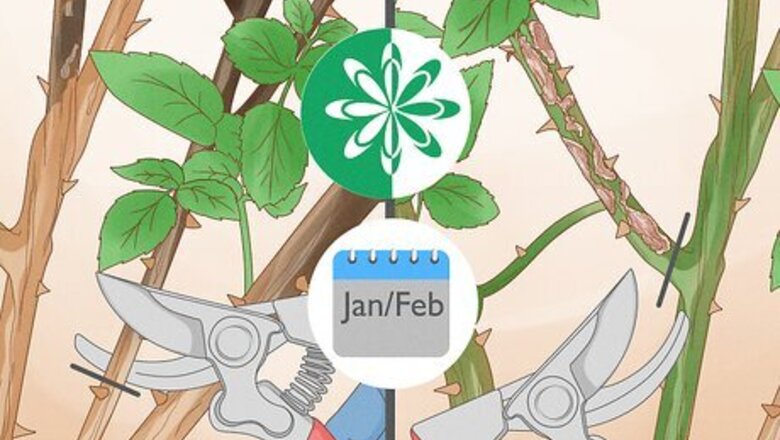
views
Deciding When to Prune
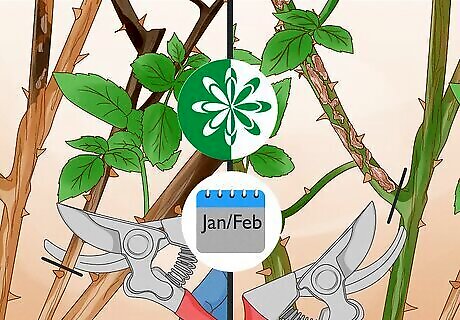
Prune right after the last frost. Depending on where you live, this might be late January or February, or it could be some time in early spring. Pruning just after the last frost of the season is the best time to clear away dead or diseased rose canes (stems). Since you waited until there's no chance another frost will happen, the rosebush won't get damaged by harsh temperatures or ice. Roses can be pruned in winter, but it must be late in the winter season. For help with doing this safely, to ensure tidy and healthy roses for the springtime, see How to Prune Roses in Winter. Similarly, you can prune roses during fall, but you need to wait until after the first frost is over.
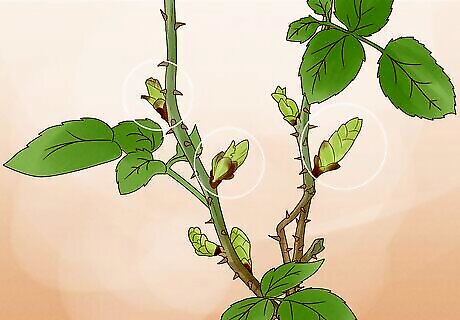
Prune when the buds have begun to swell. This is an indicator that the bush is ready to be pruned. When the buds have just begun to swell, you'll be able to prune effectively without causing any damage. Check the stems for signs of leaf bud growth. If you haven't seen any new growth since the fall, and you don't see tiny new swells, wait a few more weeks before pruning. The buds should also turn redder in color as they swell, another sign the bush is ready for pruning.
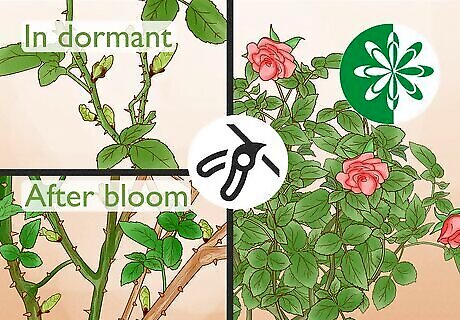
Prune according to the type of rose you have. Some roses actually need to be pruned after they bloom, rather than while they are still dormant. While it probably won't damage the rosebush to prune it at a different time of year, you won't get the results you're looking for. If you don't know what rose variety you have, look for these signs that may indicate when to prune your rosebush: If the rosebush produces new growth in the spring, and the blooms come from this new growth, that means the rosebush should be pruned while it's dormant, right when the buds have begun to swell. Wait until next spring to prune. If the rosebush blooms come straight from the old canes, rather than from new growth, the bush should be pruned after it flowers instead. Hybrid tea roses should ideally be pruned in the early spring, after the threat of the coldest days is over and before the buds starts to swell. However, it’s usually fine to prune a little earlier or later. If you prune later, your blossoms may be delayed; if you prune earlier, you might cause more winter damage.
Using the Right Pruning Technique
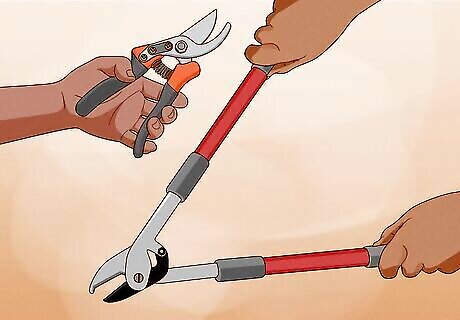
Use a good pair of pruning shears and long-handled loppers. The shears are for smaller branches, and the loppers are for thick canes. Make sure your tools are sharp so they will make clean cuts rather than causing tears and rips in the stems.
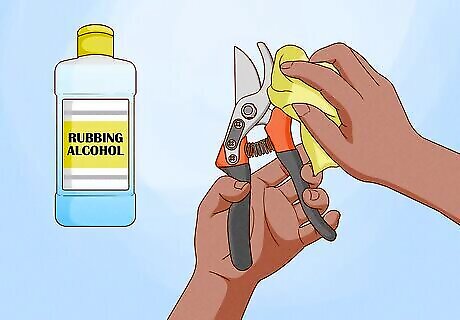
Rinse shears in alcohol before pruning. Rinse them again before moving on to another bush. This step disinfects your shears and prevents the transfer of diseases, such as black spot, between the plants.
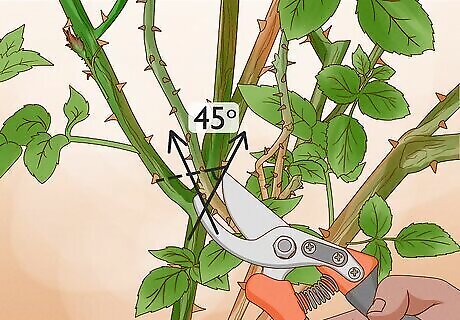
Cut at a 45 degree angle. This way water will run off of the "wound" instead of collecting there. It helps prevent disease and mold from growing on the rose bush. The slope of the angle should head toward the center of the plant.
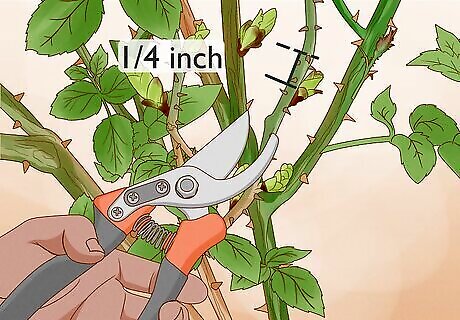
Cut 1/4" above outward-facing bud eyes. The bud eyes, also called bud unions, are the swelling reddish knobs on the canes of the rosebush. Bud eyes produce the rosebush's branches. Making cuts just above the bud eyes redirects the plant's energy to a bud eye, so a branch will form there. Choose bud eyes that are facing outward so that the branches grow out, rather than into the center of the bush.
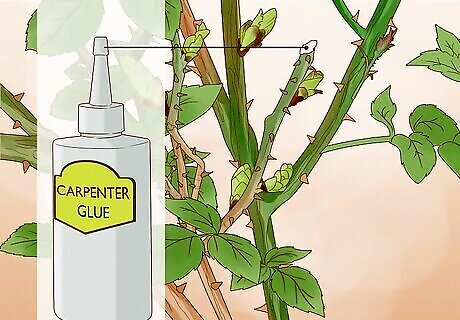
Seal pruning cuts with white glue or carpenter's glue. This isn't absolutely necessary, but it's a good idea if you have pest problems in your area. It prevents rose boring insects from invading, and helps prevent stem diseases.
Pruning to Maximize the Health of Your Roses
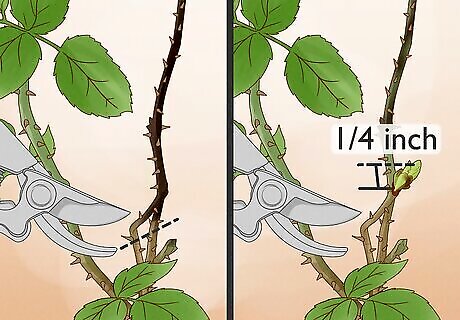
Remove the dead canes. These are the black, shriveled stalks that will no longer produce new growth. The healthy canes are green or brown and firm. Use your pruning shears to cut them as close to the base as possible. If you find a cane that looks like it's still partially alive, make a cut 1/4 ich above one of the bud eyes.
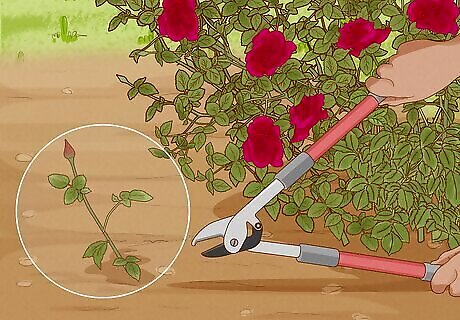
Prune the suckers. These are the new plant shoots sprouting from the ground right next to the older rosebush. They're called "suckers" because they suck away the nutrients from the older bush, causing its health to fail. Prune the suckers from their bases, rather than just chopping them down; they'll just grow back stronger if you do it that way. You might have to push back the soil a bit to get the sucker at its root.
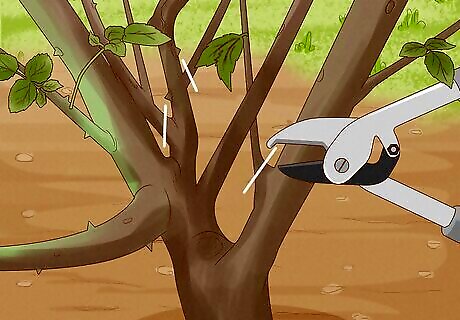
Prune thin or crossed canes. Canes that are very thin and look to be weak, or canes that are crossed toward the center of the bush, should be pruned at the base as well. These impair the bush's health by getting in the way of good air circulation, and they also make the bush look wild and unkempt.
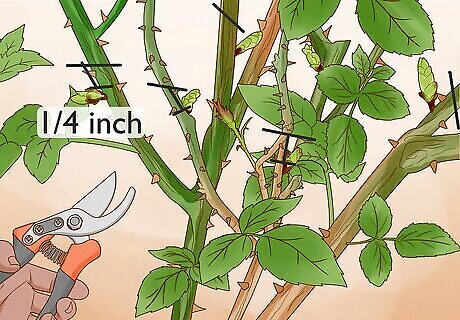
Prune the remaining healthy canes. Keeping in mind that new branches sprout from the bud eyes, prune the remaining canes to achieve the desired rosebush shape. Prune ⁄4 inch (0.6 cm) above outward facing bud eyes, so the new branches will grow outward. Decide how high or low you want to keep the bush, and prune accordingly.
Deadhead the bush. As the growing season moves along, the bush will produce blossoms that eventually fade. Removing these is called deadheading, and is healthy for the rosebush. The energy that went toward the fading blossom will be redirected to produce a new one. Cut the spent bloom off just above the first five leaf cluster.


















Comments
0 comment